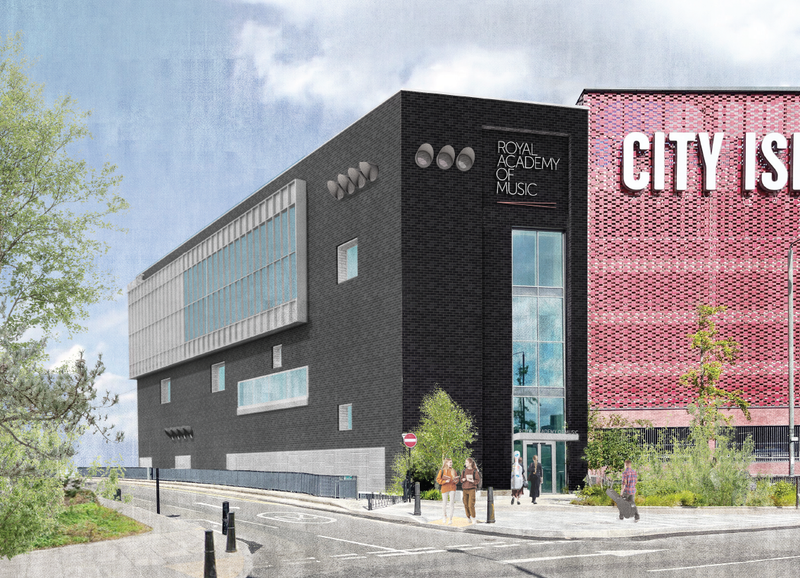Dominating the new site are four large, acoustically separated studios (up to 160 square metres each) which will transform possibilities for students in every department and especially the training prospects for opera and musical theatre. These will be augmented with 10 teaching and practice rooms, each including a grand piano and in-built recording facilities. The new studios will create 2,000 square metres of additional space. The Academy has no plans to increase the intake of students, and these new facilities are designed solely to improve the student experience.
The Academy’s main home on Marylebone Road in central London NW1 will continue as the primary location for the majority of teaching, practice and rehearsal, and all public performances will happen there. Just 22 minutes by tube, the new building will provide additional opportunities for students, relieve pressure on the main building and create supplementary space for the Academy’s growing Widening Participation initiatives which identify, train and mentor young people from under-represented backgrounds.
‘This acquisition is a game-changer for the Royal Academy of Music and integral to our future as we take our already-world-class facilities to a new level and to a new place – a place in the east of London with endless possibilities, as we extend our reach across the city and beyond.’
Jonathan Freeman-Attwood, Academy Principal
The Academy also plans to develop projects with community partners in the area that work in special educational needs and disability (SEND) settings, hospital patients, care home residents and staff and people attending day centres. Through projects with existing partners in central and south London, Academy students have the opportunity to work with over 5,000 people each year.
‘The Royal Academy of Music's extraordinary cultural centre will not only be a place of musical excellence and learning, but will also strengthen the Academy’s social impact—improving access to music education for all.'
John Mulryan, Group Managing Director, Ballymore

The studios will be inside an existing building which has been offered to the Academy on a 100-year peppercorn rent from London City Island developers EcoWorld Ballymore as part of their master plan to create a vital cultural hub in east London. The Academy will cover the redevelopment costs through philanthropic support, with a generous donation of £5million already committed towards the costs. The building is on the same island peninsula as English National Ballet’s headquarters and will be designed by award-winning AOC Architecture whose recent work includes Young V&A in Bethnal Green (winner of Museum of the Year 2024), The National Archives in Kew and Somerset House Studios (winner of New London Awards Best Workplace 2022). The designs will be carbon-efficient and achieve the environmental BREEAM standard of ‘Excellent’.
'The Royal Academy of Music’s new building is conceived as a stacked village of studios that support new forms of collaboration and creativity. Diverse in scale and form, the family of distinct, acoustically tuned rooms provide the ideal conditions for practice and learning, integrating analogue and digital production.'
Geoff Shearcroft, AOC Architecture
‘We’re proud to see London City Island continuing to grow as a vibrant cultural destination. From the outset, our vision has been to create a thriving community where world-class arts and education can flourish. Welcoming the Royal Academy of Music reinforces the Island’s role as a true home for creativity and performance.’
Anita Hughes Campbell, Managing Director, EcoWorld International (UK)
Image of Nicholas Chalmers, Fernside Chair of Choral Conducting, directing vocal students in the new space at London City Island © David Tett
CGI image © AOC Architecture